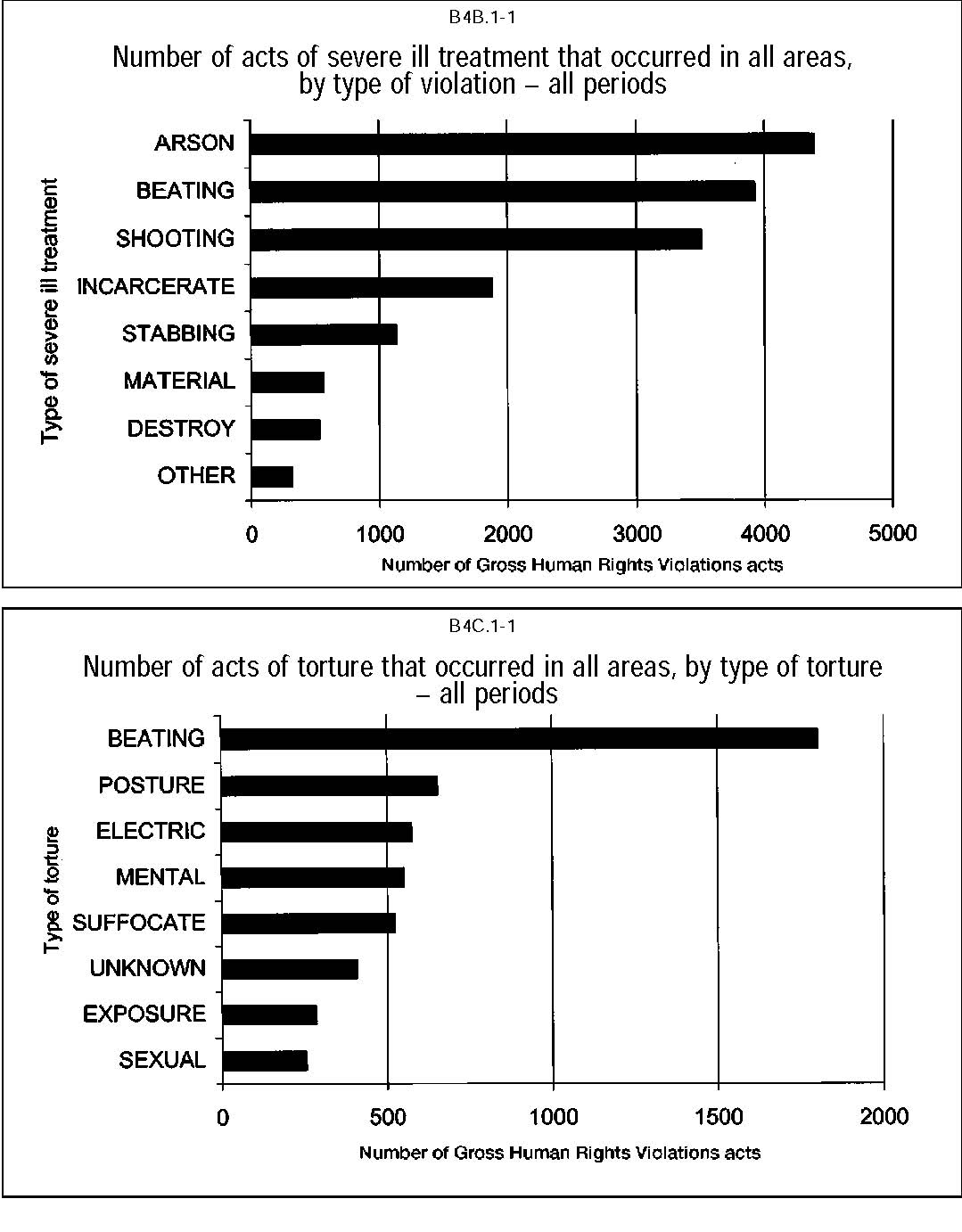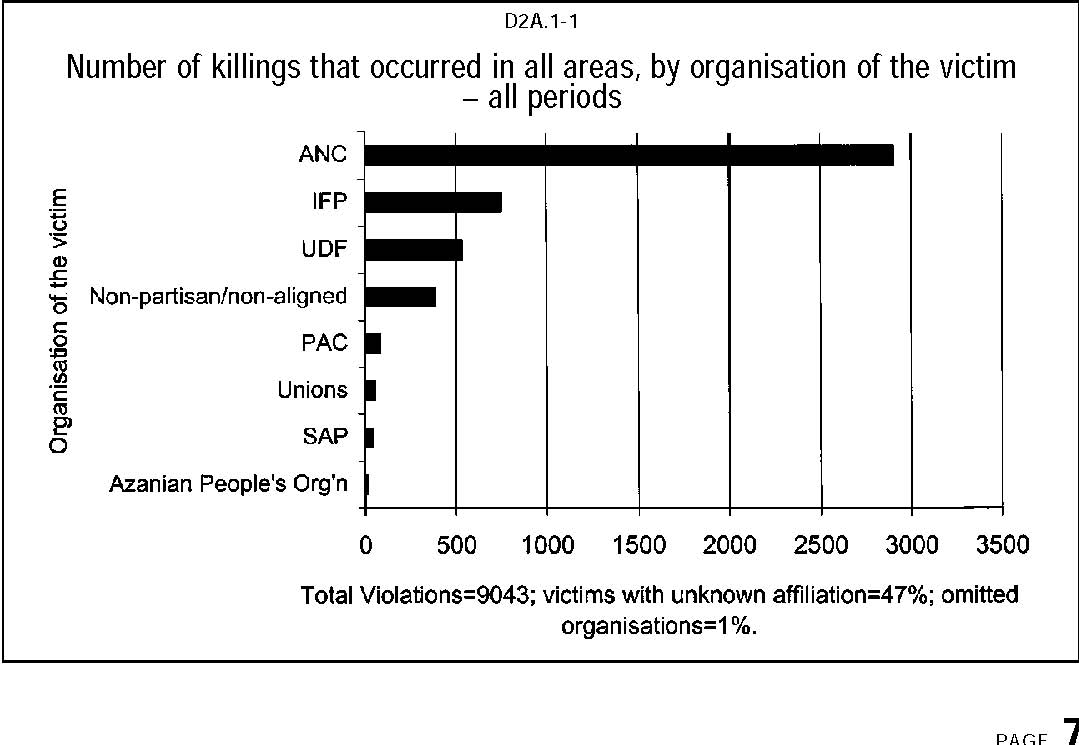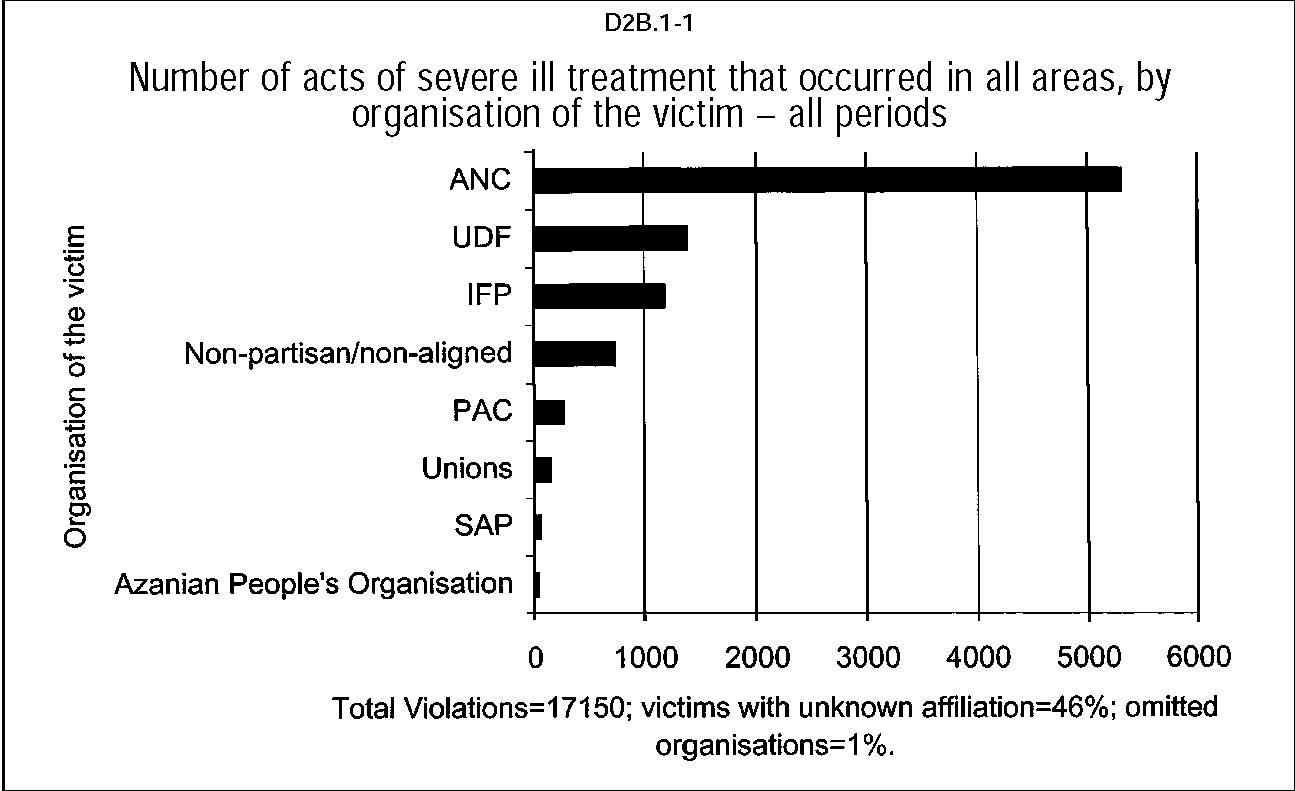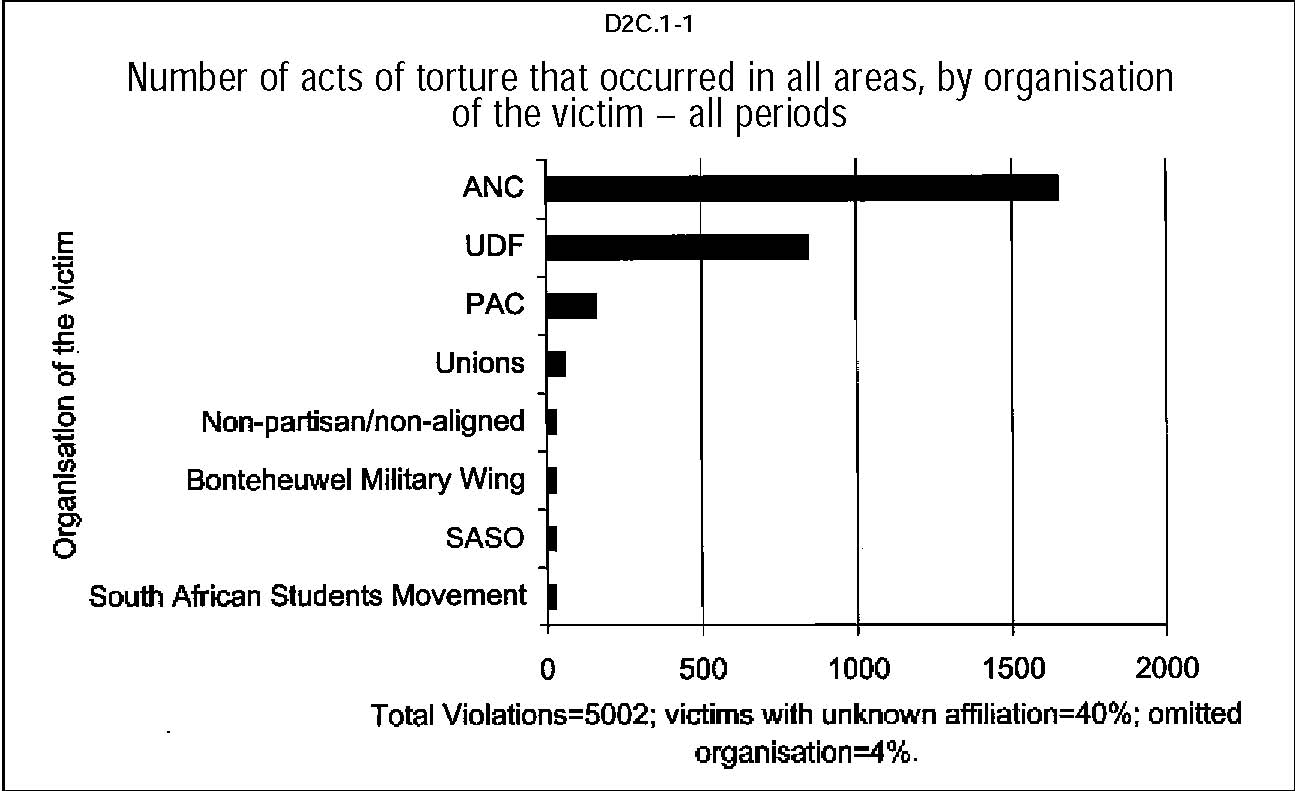 |
News | Sport | TV | Radio | Education | TV Licenses | Contact Us |
 |
News | Sport | TV | Radio | Education | TV Licenses | Contact Us |
TRC Final ReportPage Number (Original) 6 Paragraph Numbers 22 to 31 Volume 3 Chapter 1 Subsection 4 Nature of the violations 22 To make sense of these patterns, it is necessary to look at what sort of violations fall into each category (what constitutes severe ill treatment, for example). Each of the categories of human rights violations was broken up into sub-headings5, so a clearer picture emerges from a more detailed look at the violations. These charts show the top eight sub-types of each human rights violation category, starting with killings6: 23 Of the killings, the greatest number was by shooting; the next most common was stabbing. The number of unknown causes of death is very high, either because the deponent did not reports were inadequate. Death by multiple causes is very common; usually a consequence of victims being shot, stabbed and/or burnt at the same time. 24 The large number of deaths by burning is mainly a consequence of the number of arson attacks. Note that burning does not include what was known as ‘necklacing’7. Necklacing was categorised separately from burning, and was the tenth most common cause of death, at seventy-one instances. 25 Destruction or loss of material goods is the most common type of severe ill treatment, taking the form of arson, destruction of property and material loss. This was followed by injuries to the individual by means of shooting and beating. There were over 1 800 instances of incarceration under conditions which amounted to severe ill treatment.   26 Over 2 900 people reported 5 002 instances of torture, the most common of which was by beating. More than 2 000 instances of deliberate methods of torture, such as being forced into painful postures, electric shocks, suffocation or mental torture were reported. 5 See appendix 2 to Analysis of Human Rights Violations in Volume 5 for the coding frame, which provides a complete list of the definitions used. 6 In all charts of this type, only the top eight categories are shown, for brevity. 7 'Necklacing' refers to the practice of placing a car tyre around the neck of a victim and setting it alight.Victim organisations27 In terms of its mandate, the Commission was obliged to examine the conflicts of the pastina political context, so political allegiance is an important factor to consider when looking at the trends and patterns of the violence.   28 Deponents were asked to specify the victim’s organisational membership. Many people did not reply; many did not belong to a specific organisation and many deponents did not know whether the victim belonged to an organisation. The results of those who did reply are shown below, starting with the killings: 29 Of the top eight organisations, African National Congress (ANC) members were overwhelmingly the majority of those killed. Nearly four times as many ANC members died as did those in the next largest category, Inkatha Freedom Party (IFP) members. United Democratic Front (UDF) members were the third largest category of those who died. 30 A similar pattern emerges for cases of severe ill treatment, with ANC, UDF and IFP members experiencing the most violations. As with killings, members of the South African Police (SAP) suffered very few violations in comparison with the others. 31 The pattern of torture is different. No IFP members were reported to have been tortured, nor were members of the state security forces. The vast bulk of torture incidents involved members of the ANC, UDF and PAC. |